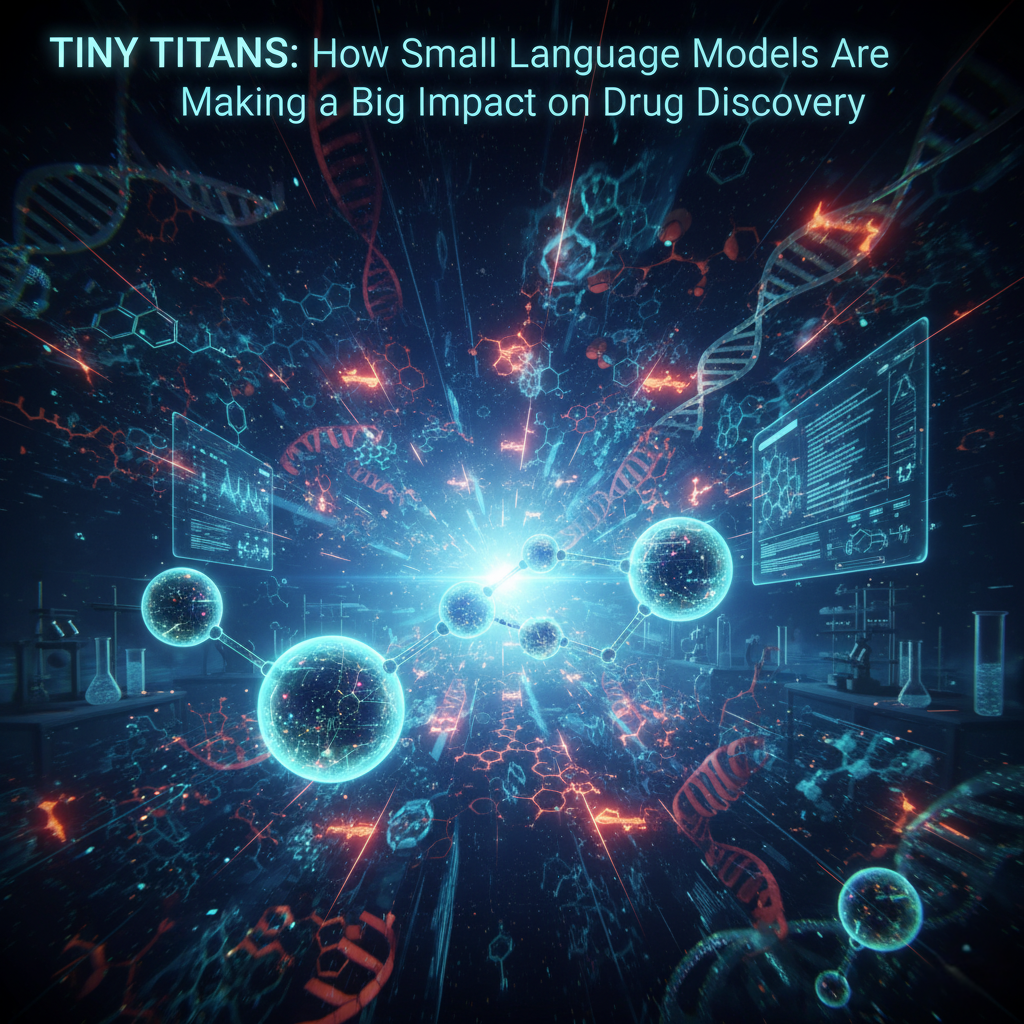The world of artificial intelligence is often dominated by talk of massive, resource-hungry models. However, a new class of AI, Small Language Models (SLMs), is quietly revolutionizing the complex and costly process of drug discovery. These efficient and powerful models are accelerating research, democratizing access to cutting-edge technology, and paving the way for the next generation of therapeutics.
What Exactly Are Small Language Models?
Unlike their larger counterparts, Large Language Models (LLMs), which can have billions or even trillions of parameters, SLMs are designed to be lean, typically containing tens to hundreds of millions of parameters. This compact architecture allows them to run on less powerful hardware, making them accessible to a wider range of researchers.
By using sophisticated training techniques, SLMs can perform highly specialized tasks, such as predicting molecular interactions and generating novel drug candidates, with remarkable speed and accuracy.
How SLMs Are Transforming the Drug Discovery Pipeline
SLMs are being applied across various stages of drug discovery, from initial screening to lead optimization. Here are some of the key applications:
High-Speed Virtual Screening
One of the most time-consuming steps in drug discovery is screening vast libraries of chemical compounds to find potential drug candidates. SLMs can rapidly analyze chemical data (often represented as SMILES notations) to predict how strongly a molecule will bind to a specific protein target.
For instance, the ConPLex model, developed by researchers at MIT and Tufts, can screen over 100 million compounds per day—a task that would traditionally take months.
Generative Chemistry for Novel Molecules
Going beyond just screening existing compounds, generative SLMs can design entirely new molecules from scratch. Trained on vast datasets of molecular structures, models like Chemlactica and Chemma can generate novel compounds with specific desired properties, such as high potency and low toxicity.
Predicting Drug-Drug Interactions (DDI)
A critical aspect of drug development is understanding how a new drug will interact with other medications. The D3 model, with only 70 million parameters, has shown it can predict these complex interactions with an accuracy comparable to much larger models, showcasing the power and efficiency of a more focused approach.
The Advantages of Being Small
The compact size of SLMs offers several distinct advantages in the context of drug discovery:
- Speed and Efficiency: SLMs require significantly less computational power, allowing research teams to run complex simulations and screenings without the need for supercomputers. This drastically reduces the time and cost associated with early-stage drug discovery.
- Accessibility and Democratization: By lowering the barrier to entry, SLMs empower smaller academic labs, startups, and researchers in developing countries to contribute to drug discovery research, fostering a more inclusive and collaborative scientific community.
- Greater Transparency and Interpretability: The inner workings of smaller models are easier to understand and scrutinize. This "interpretability" is crucial in a highly regulated field like pharmaceuticals, where researchers need to explain why a model made a particular prediction.
- Ease of Customization: SLMs can be more easily fine-tuned for specific tasks in bioinformatics and cheminformatics. This flexibility allows researchers to adapt the models to their unique needs, leading to more accurate and relevant results.
Challenges and the Road Ahead
Despite their many benefits, SLMs still have limitations. They can struggle with complex 3D molecular structures and may not capture the full biological context of a disease. However, the field is rapidly advancing. New techniques, such as the integration of 3D structural data and multi-modal learning, are helping to close these gaps.
The Future is Collaborative
The future of drug discovery is poised to be a collaborative effort between human expertise and artificial intelligence. Small Language Models are not just a smaller alternative to LLMs—they are becoming indispensable tools that are making the ambitious goal of faster, cheaper, and more effective drug development a reality for researchers everywhere.
Ready to Accelerate Your Drug Discovery?
Learn how BioCogniz can integrate AI-powered solutions into your research pipeline
Get In Touch